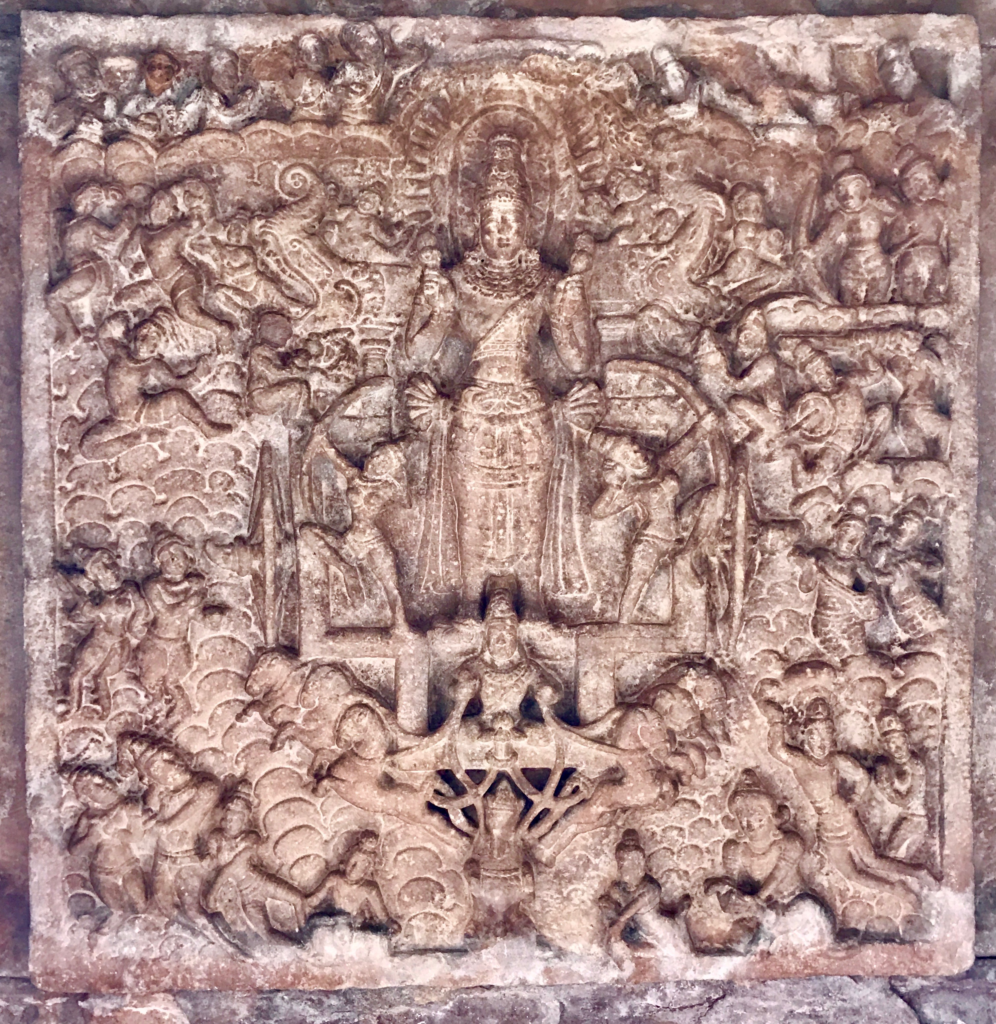
Icons are religious representations of spiritual ideals or symbols of highly esteemed individuals or objects. That someone might be someone admired for their life, such as Nelson Mandela. Water is sacred because it sustains life, and pipal trees are valuable because they produce oxygen. However, anthropomorphic symbols—such as paintings of Jesus Christ or statues of Hindu deities—are typically used to interpret it. The study of icons, their creation, their meaning, and other related topics becomes known as iconography. Development varies depending on the locale. Tamil Nadu’s Nataraja, or Nateshwara, is Bengal.
Iconography serves as a representation of religious belief as well as a source for historical and social science research. It is important to consider the meaning behind each image and the rationale behind the deity’s exclusive affiliation with a certain set of qualities. A group of people’s important social and economic elements were portrayed in language as stories and in artwork as icons. These features were held in high regard by the followers, who also created a magical, mysterious, and supernatural air around them that eventually led to religion and ritual. They were considered myths by later generations. Iconography is a vital pulse, and art represents a social experience that forms a part of a cultural heritage.
Using symbolism, the Indian artist had to express a vision that the poet’s keen intellect could not only understand, but also recognize and value for the devotees to whom the works were meant to be dedicated. Because of this, iconography had to take precedence over literacy in order to reach the uneducated, whose belief in oral customs was ingrained in their minds.
With the advance of civilisation, the primitive was coated with veneers of sophistication and often became unrecognisable, sometimes even deliberately so. One such example is found in the Roman Catholic cult of the Virgin Mother, a continuation of earlier Pagan traditions. While the later gloss may represent changing ideas and philosophical ideals, the earlier traditions correlate directly to the problems of life and survival.
Religious imagery, complete with symbolic gestures and the “mudra,” is a common feature of Indian art. The aureole and halo, which are common in Islamic and Christian art, are two examples of the iconography found in Indian painting. In asana and ritual implements like the dharma chakra, vajra, dadar, chhatra, swastika, phurba, and danda, divine characteristics and traits are represented. More illustrations may be found in the Mathuran style, which drew inspiration from India’s native customs to depict the human form in strong, rounded volumes that symbolised the fertility of nature. The iconography of Buddhist images developed throughout this time, and Buddhist architecture and sculpture flourished.
Each deity in the Hindu pantheon is associated with a certain combination of emblems, attributes, flora and fauna, whose origin tells a tale. To cite an example, Vishnu holds the gada or club, a Neolithic weapon. Thus he must have been an ancient Neolithic deity. The shankha or conch of Krishna was acquired after defeating Panchajana, a demon who lived in the waters in the form of the conch.
From the 18th century, a long line of academics and critics have studied Indian iconography. The 1714 publication of Ziegenbalg, a Danish missionary in Tranquebar, entitled his work “Genealogy of South Indian Gods,” makes him the acknowledged pioneer in this discipline.
George Foster published “Sketches of the Mythology and Customs of the Hindus” in 1785. Moore’s “Hindus Pantheon,” which was later rewritten in 1864 by Rev. W. O. Simpson, came next in 1810. Col. Vans Kennedy published “Ancient and Hindu Mythology” in 1831 to add to the body of knowledge already available on the topic. In 1879, John Dowson published “A Classical Dictionary of Hindu Mythology.” ‘Hindu Mythology’ by W.J. Wilkin was the final work of its kind published in the 1800s. In the second decade of this century (1914 and 1916), T. A. Gopinatha Rao, the Superintendent of Archaeology in the State of Travancore, set new standards with his two-volume, four-part (each volume in two parts) “Elements of Indian Iconography.” He was inspired to start this work, which was a truly enormous undertaking given the era he was living in and the lack of modern transportation and photographic reproduction facilities, by Fergusson of the Archaeological Survey of India, who noted that not much had been done to illustrate mythology.”The production of illustrations has now become so easy and inexpensive (this must be taken as a comparative statement with reference to the earliest times) that photographs from original materials of a satisfactory class might readily be published to supply this most pressing desideratum,” stated Fergusson. “It would be a legitimate part of the duty of the Archaeological Surveys to collect materials on a systematic plan for this object.”
The “Evolution of Hindu Iconography” by J. N. Banerjea, published by Calcutta University in 1941, is another landmark in iconographic studies. Banerjea both completes and complements Rao’s “elements,” and one of the merits of her book is that she treats coins and seals as useful material for the study of Hindu iconography. Several publications on this subject have appeared in recent years, but almost all are heavily based on the standard work of Rao and Benerjea. .
The agamas and shastras, which eventually became the foundation of Indian iconography, were composed and developed a considerable amount of time after the first icons had been created and their definitive shape determined. In actuality, the shastras just codified as inflexible the works of preceding artists.
Iconography thus becomes an investigation into the growth of spiritualism and religious expression—of social, human, and sensory evolution. As such, it is a part of the narrative of people and their surroundings, lives, and dedication. The entire thing is known as human history.
Aneequa Erum has Masters in Art Appreciation /Art History from Jamia Millia Islamia , New Delhi. Her passion for art history has led her to develop strong research skills, with the ability to analyse complex information and present it in an engaging and accessible way.
